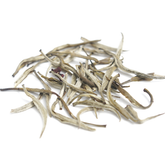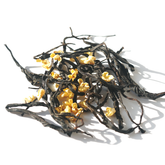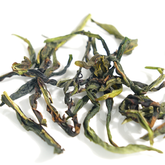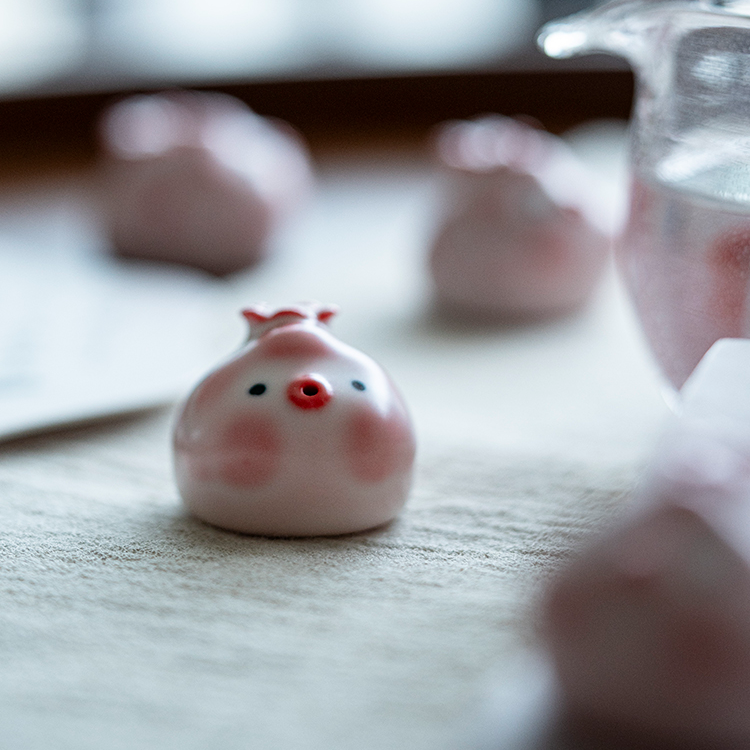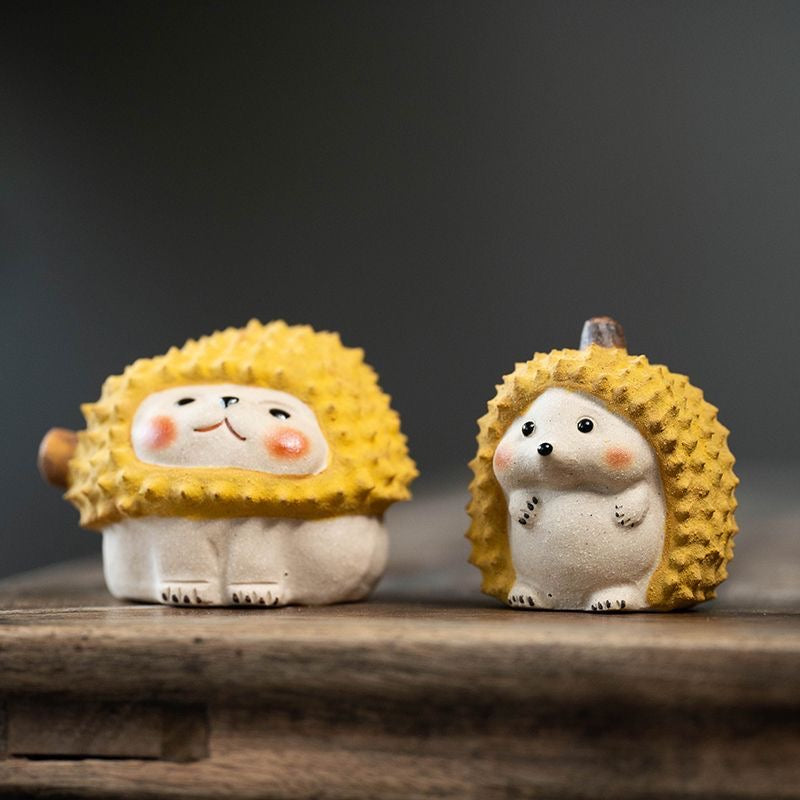The Ultimate Guide to Chinese Tea Pets: History, Meaning & How to Use
In traditional Chinese gongfu tea ceremonies, besides the gaiwan and teacups on the tea tray, there is often a small clay animal figurine. It sits quietly, waiting for the first pour of tea. This unique companion is what we call a tea pet.
The term “tea pet” literally means a “pet” nourished by tea. They are small figurines of animals or characters made from clay, usually Yixing clay (zisha), and placed on a corner of the tea tray. Some are decorative, while others carry cultural meanings or serve special functions.
In the following article, we will introduce the history, functions, and methods of “raising” tea pets in Chinese traditional tea culture. In fact, they are not just decorations—Chinese tea petsalso serve multiple purposes.
Recommended purchase:
History of the Chinese Tea Pet
The history of the tea pet is inseparable from Yixing, China—the famous pottery capital that still produces the finest Yixing teapots today. Yixing’s ceramic production dates back to the Neolithic era, but what truly established its reputation in China and beyond was the discovery and use of unique zisha (purple clay).

Song Dynasty (960–1279): During the Song dynasty, literati tea culture flourished, and the charm of Yixing clay began to be appreciated; at that time, pottery tea wares already appeared.
Ming and Qing Dynasties (1368–1912): The craft of making Yixing teapots reached its peak—its unique material, rustic color, and superb workmanship made it the preferred tea ware among scholars and connoisseurs.
Tea pets are often made from the same Yixing clay as teapots. Their porous, unglazed surface gives them excellent absorbency. Craftsmen would use leftover clay to shape small animal or human figurines. While nurturing teapots, tea lovers also began pouring tea over these little ornaments—thus the habit of raising tea pets began.
Purpose of Chinese Tea Pets
As an indispensable companion on the tea table, a tea pet is far more than a simple ornament. These charming figures mainly serve the following purposes:
Decoration & Companionship
Tea pets are eye-catching ornaments that bring liveliness and fun to the tea table. More importantly, they often become an emotional companion for tea drinkers.

Culture & Symbolism
In traditional Chinese culture, tea pets come in various shapes, each carrying unique symbolic meanings. Their purpose is to convey good wishes, such as wealth, protection, luck, longevity, and harmony, while enriching the tea-drinking experience.
Practical Functions
Testing water temperature: Some tea pets change color or spray water when hot water is poured on them, helping tea lovers gauge whether the water is ready.
Holding tools: Certain designs can hold a tea brush or tea strainer, serving both decorative and practical purposes.
Fun interaction: Some hollow tea pets spray water or bubbles when doused, adding a playful touch to the tea ritual.
How to Raise a Chinese Tea Pet
Raising a tea pet requires patience. The main method is to pour leftover tea over it, allowing the figurine to absorb the tea essence. Over time, the tea pet will develop a smoother surface and a pleasant tea fragrance.

Tea nourishment: Pour leftover tea over the tea pet to let it absorb color and aroma. With time, the clay develops a glossy, fragrant surface.
Moist & dry balance: Do not soak the tea pet in tea water for long. The best way is to pour fresh tea over it while drinking tea.
Choice of tea: Ripe Pu-erh tea works best for raising tea pets due to its deep color, but any type of tea is suitable.
Water temperature: Always use hot water, but avoid pouring boiling water directly. Warm tea is ideal for nurturing a tea pet.
For regular care, you can maintain your tea pet just like a Yixing clay teapot—gently pour tea over it and lightly brush it. Avoid using soap or any detergents, as they can damage the tea pet’s natural color and aroma.
Symbolism of Different Tea Pets
In China, tea pets are more than decorative objects—they carry cultural meaning. Just as a four-leaf clover symbolizes luck in Western culture or a lucky elephant brings fortune in India, each tea pet represents a specific blessing—such as wealth, protection, good fortune, longevity, or mindfulness—reflecting the values and beliefs of traditional Chinese tea culture.
-
Golden Toad (金蟾):: Symbol of wealth and prosperity.

-
Pixiu (貔貅): A mythical beast believed to attract wealth and ward off evil.

-
Qilin (麒麟): Represents good fortune, kindness, and peace.

-
Maitreya Buddha (弥勒佛) : Symbol of joy, satisfaction, and longevity.
-
Elephant (大象): Represents luck and is believed to attract wealth.
-
Tortoise (乌龟): Long life and reunion.
-
Cabbage (白菜): Symbol of abundant wealth.
-
Monk (和尚): Often in “see no evil, speak no evil, hear no evil” poses, representing Zen spirit.
Using Tea Pets to Test Water Temperature
Some Chinese tea pets have a unique design that allows them to test water temperature. This relies on hollow structures and simple physical principles. Testing water temperature is important because different types of tea require different brewing temperatures to bring out their best flavors.

For example, delicate green teas need lower temperatures to avoid bitterness, while oolong or black teas benefit from hotter water to fully release their aroma and taste. By observing the reaction of the tea pet, tea drinkers can ensure the water is just right for each specific tea.
-
High, strong water jet: Indicates boiling water, close to 100°C.
-
Low, weak water jet: Suggests the water is too cool and needs reheating.
Fun with Color-Changing Tea Pets
Some Chinese tea pets are designed with a color-changing function. The principle is simple—when hot tea is poured over them during rinsing, the heat-sensitive material on their surface changes color. This brings a playful, interactive touch to gongfu tea sessions, making afternoon tea more fun and engaging.

Other Uses of YiXing Tea Pets
Besides decoration, symbolism, and testing water, tea pets also offer practical convenience:
Holding gaiwan lid – keeps the table dry.
Holding tea strainer – avoids dripping on the tea tray.
Holding tea brush – provides a fixed and hygienic place.
Holding incense stick – provides a stable and elegant placement.

These details keep the tea table tidy and reflect the tea drinker’s attention to order and aesthetics.
Conclusion on Chinese Tea Pets
Tea pets come from Yixing, the birthplace of Chinese pottery, famous for its Yixing teapots. These small clay figures—shaped as animals or characters—absorb the color and aroma of tea over time, becoming naturally glossy and fragrant.
Besides decoration, tea pets can test water temperature and hold small tea tools, making the gongfu tea experience more enjoyable and meaningful.In short, tea pets make the art of brewing gongfu tea more vivid, meaningful, and enjoyable.
FAQs ABOUT Tea Pets
Q1. What is a tea pet? — A tea pet is a small clay figurine placed on a tea tray in traditional Chinese gongfu teapractice, often made from Yixing clay.
Q2. What are tea pets used for? — They serve as decoration, carry cultural meanings, and some can even help test water temperature during tea brewing.
Q3. How do you use a tea pet? — Simply pour leftover tea or hot water over the tea pet to “nurture” it and enhance its color and aroma over time.
Q4. How to choose a tea pet? — Pick one based on its design, symbolic meaning (e.g., wealth, luck, longevity), and material quality, such as purple clay or Yixing clay tea pets.
Q5. Can tea pets be raised with different teas? — Yes, all types of tea, from oolong tea to pu-erh, can be used to gradually enrich a tea pet’s color and scent.
SEE MORE ABOUT TEA
If you are a beginner about Chinese tea:
Basic-Guide-to-Chinese-Tea
If you have questions about selecting tea:
Learn-more-about-chinese-tea
If you have questions about the benefits of tea:
Health-benefits-of-chinese-tea
If you have questions about brewing tea:
How-to-brew-loose-leaf-tea

